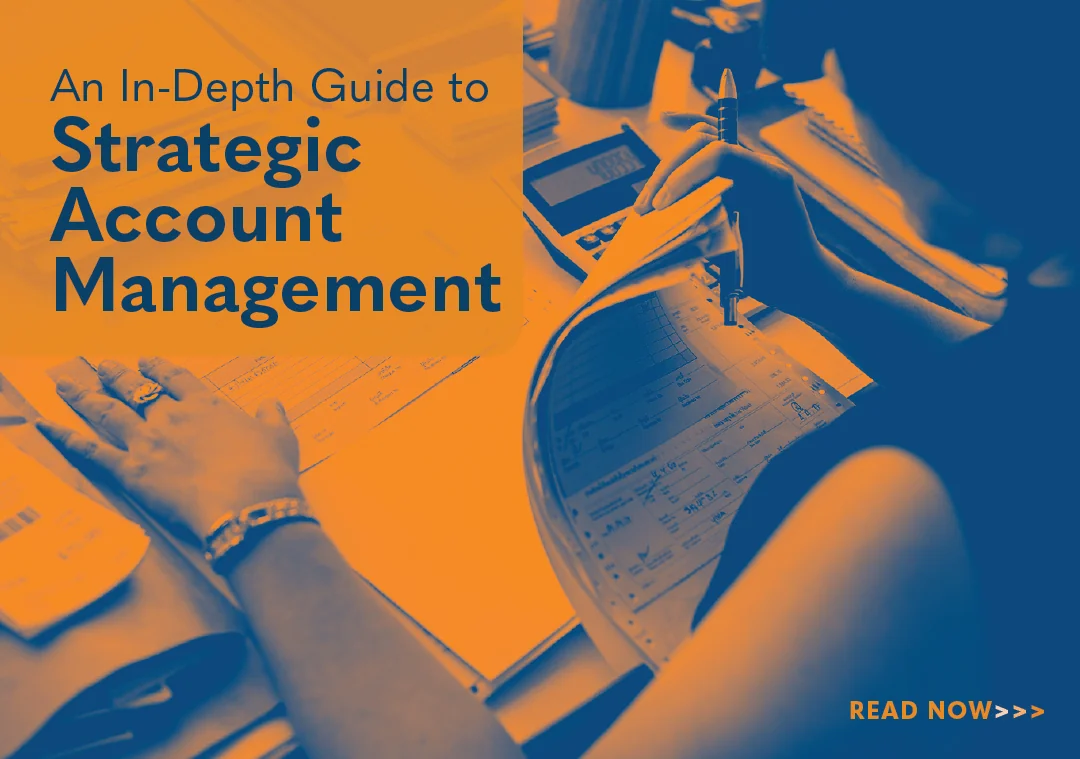How Customer Experience Maximizes Deal Profitability

To stay ahead of the competition in today’s sales landscape, organizations must create exceptional customer experiences. According to Zippia, improved customer experience can increase revenue 10-15%. Also, 42% of customers will pay more. Further, 89% would switch sellers from a negative experience.
Yet Gartner research shows many CMOs rank customer experience as a top-three capability gap. In addition, more than 80% expect to mainly compete on customer experience. This makes it essential for organizations and salespeople to deliver. Here, we’ll explore how focusing on customer experience can significantly impact deal profitability and margins.
From a Product-Centric to a Customer-Centric Approach
In the past, when sales strategies centered on products, features and benefits ruled the day. If the product worked and the price was fair, you made a deal. In these simpler times, experience was an afterthought.
With the rise of the internet, buyers had access to more sellers, products, and information. This gave them options. However, with increased competition and customer knowledge came expectations and choices. This shifted the power balance. Buyers suddenly found their all-powerful selling gods had feet of clay. Out of necessity, sellers quickly recognized the importance of the buying experience.
A customer-centric sales approach understands needs, preferences, and pain points. It tailors products, services, and interactions to match. Through this, organizations and sellers differentiate themselves from the competition, who often offer similar products and prices. In this, sellers build stronger, more profitable relationships.
The Role of Customer Experience in B2B Sales
Customer experience begins with initial contact and runs through post-purchase support. It encompasses a customer’s every interaction with your company, whether through email, phone calls, in person, or digital. In addition to the products, services, and information you provide, it’s how your organization makes customers feel.
In B2B sales, deals are often complex. This means multiple users making different inquiries at the same time. It also means needs are continuously evolving through various interactions and touchpoints. Providing a consistent, positive experience throughout your partnership is essential for branding and reputation.
More importantly, it is critical for building long-term relationships. These result in repeat purchases, account growth, and new business development. According to McKinsey, it can lead to higher customer satisfaction, reduced costs, and 10-15% revenue growth. Here’s how:
Build Trust and Credibility
Trust and credibility form the heart of all successful B2B sales transactions. Buyers must trust sellers will be true to their words and promises. Remember, though, trust is earned. And most buyers have worked with numerous salespeople, with differing levels of success. They’ve heard the talk. Therefore, sellers must prove they can deliver the following:
- Transparency
- Responsiveness
- Integrity
Transparency gives sellers the luxury of being aboveboard in all their actions. Because they place customers first, they can be honest and forthright.
From initial inquiries to post-deal support, responsiveness is critical to maintaining trust and credibility.
In sales, integrity is all about putting your customer’s needs first. It’s personifying selling as a proud profession of trusted advisors over product pushers. And according to Drip.com, 88% of B2B buyers only buy from sales reps they see as trusted advisors.
Enhance Value
Perceived value plays a significant role in B2B purchasing. Beyond a product or service’s tangible features, customer experience includes factors like:
- Reliability
- Ease of doing business
- Support services
Today, reliability does not end with a product. Sure, it must deliver as advertised. And without a performance guarantee, 86% of B2B decision makers will choose another supplier. But the experience includes the seller, check-ins, and support.
With increased options, buyers will seek the easiest experience. In fact, 84% of B2B buyers find easy access to technical content “very important.” Plus, 83% prefer digital commerce.
Support is also critical. Like B2C customers, B2B buyers know products and processes do not keep 9-5 hours. This means when clients need you, they can reach you.
In addition, personalized solutions, expertise, and exceptional service enhance value. This justifies premium pricing and gets to the heart of the customer experience.
Differentiate From Competitors
Today, competition is steep, but competitors often offer similar products or services. Therefore, experience is a key differentiator. Gotoclient notes 90% of B2B leaders believe improving customer experience provides a competitive advantage. This includes:
- Superior service
- Custom content
- Anticipating customer needs
Service is more than being available. It’s proactively introducing support staff prior to an issue, such as IT or finance officers.
In marketing, “content” can be a misnomer. Rather than generic words or images, it demonstrates thought leadership. It’s also relevant to individual clients at specific stages. According Seomator, 83% of B2B marketers cite content quality as the most important differentiator.
More than being prepared for problems, sellers must recognize opportunities for clients. This can include proactively upgrading products and services or providing sound business advice.
Drive Repeat Business
A positive customer experience not only facilitates initial sales. It encourages repeat business though the following:
- Cross-selling and upselling
- Seeking referrals
Quite simply, satisfied customers are more likely to trust sellers. This helps grow existing accounts. According to HubSpot, cross-selling and upselling drive 21% of revenue.
Today, word-of-mouth endorsements are key to building trust. As HubSpot also notes, 33% of referrals come from existing customers and another 33% from social media. When you help customers, most will want to help you.
Strategies for Enhancing the Customer Experience
Leveraging the customer experience to maximize profit requires adopting several key strategies. These include:
Relationship Building
Exceptional experiences start with relationships. Sales professionals must first view clients as individuals and understand their unique needs and goals. They then must:
- Establish rapport/familiarity
- Personalize interactions
Rapport goes beyond inquiring about a client’s daughter’s soccer team or their pet’s vet checkup. It’s so deeply understanding their needs and driving outcomes they rely on you, both professionally and personally. And it’s prioritizing people to build partnerships.
Personalizing interactions starts with knowing the client’s preferred communication methods. Of course, if they like texting, you’ll text. And it’s utilizing social media, such as sharing relevant news articles or acknowledging milestones. But even more, it’s appreciating their sense of humor. And it’s knowing them as Sam and Chris more than Director of Purchasing and VP of Procurement.
According to marketing and tech consultants DemandGen, 76% of B2B buyers expect personalized attention based on need.
Value-Added Services
Beyond offerings, value-added services can enhance customer experience. This includes:
- Customized solutions
- Training and support
Always tailor your products and services to meet specific needs. And when individual products satisfy singular needs of multi-tiered problems, combine them. Provide the client with package deals that include special pricing and incentives.
Products and services are only as good as they are usable. Ensure clients have the right tools and resources, including regular training, support, and maintenance.
Streamline the Buying Process
For modern buyers, complexity and inefficiency are experience killers. These not only lead to frustration. They can prevent repeat business and future opportunity. Therefore, simplify the buyer’s journey by leveraging technology.
Today, Artificial Intelligence can synthesize vast amounts of data from your CRM. This includes insights on customer history, preferences, and behavior. In addition, natural language processing and sentiment analysis can hyperpersonalize contact and content to enhance the customer experience.
Seek Feedback
Feedback from clients is invaluable for improving the customer experience. Therefore, sellers should solicit feedback throughout the sales process and after deals are closed. This can be done through:
- Surveys
- Win-Loss Analyses
According to research cited by SeamlessAI, 66% of customers won’t tell you they had a bad experience. This makes client surveys essential. These can include basic online/phone/paper questionnaires or Likert scales to quantifiably assess opinions and attitudes.
A win-loss analysis takes customer surveys a step further. It delves into the reasons behind both successful and failed sales engagements. This provides invaluable insights into customer needs, preferences, and pain points. By dissecting wins, sales organizations uncover what resonates with their customers. Thus, they can refine their value proposition and sales processes and replicate success.
Create a Customer-Centric Culture
To consistently deliver high-quality experiences, create a culture centered on customers. This starts with:
- Leading by example
- Enhancing collaboration
- Empowering sales teams
Organizations must commit to satisfying customers and providing positive experiences. This starts with leadership, setting goals and objectives. And it extends through their investment in coaching and training. In all, they must enable teams to keep the customer’s experience at the heart of their sales process.
Of course, a customer-centered culture is not limited to sellers. It runs through all facets of your organization. This includes greater alignment between sales and marketing. However, it also extends from product development through billing and payment. It’s ensuring all team members prioritize customer satisfaction.
In addition, empower sellers with the tools and resources to put customers first. This includes the technology cited above. But it’s also sales training and coaching that emphasizes customers over transactions.
Conclusion
Today, the customer experience is crucial to drive deal profitability and margins. In the shift from a product-centric to a customer-centric approach, sellers must build greater trust. This enables them to form stronger relationships, enhance value propositions, and differentiate themselves from competitors. Through this, they create meaningful, long-term partnerships that deliver growth and profitability.

- Account Planning (11)
- Awards (49)
- Client Testimonial (37)
- Personal Branding (19)
- Podcast (11)
- Research (70)
- Sales Career Development (87)
- Sales Coaching (156)
- Sales Consulting (137)
- Sales Culture (170)
- Sales Enablement (354)
- Sales Leadership (109)
- Sales Management (248)
- Sales Negotiation (16)
- Sales Prospecting (125)
- Sales Role-Playing (18)
- Sales Training (235)
- Selling Strategies (263)
- Soft Skills (70)
- Talent Management (94)
- Trusted Advisor (27)
- Virtual Selling (49)
- Webinar (9)


























